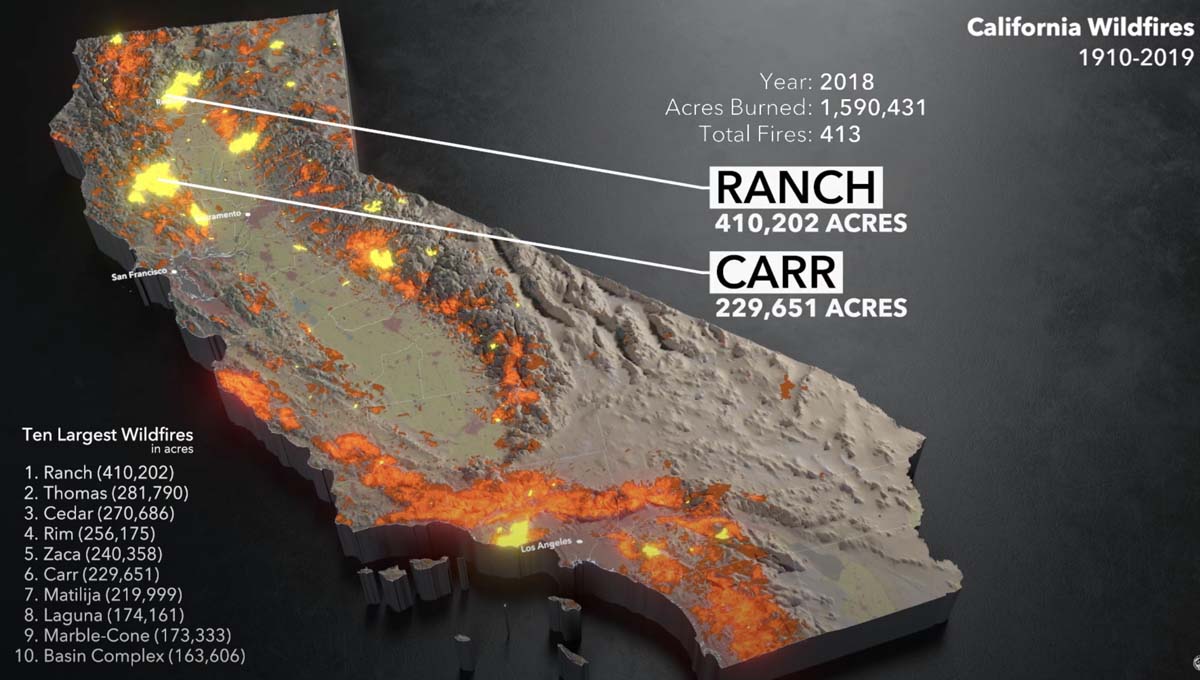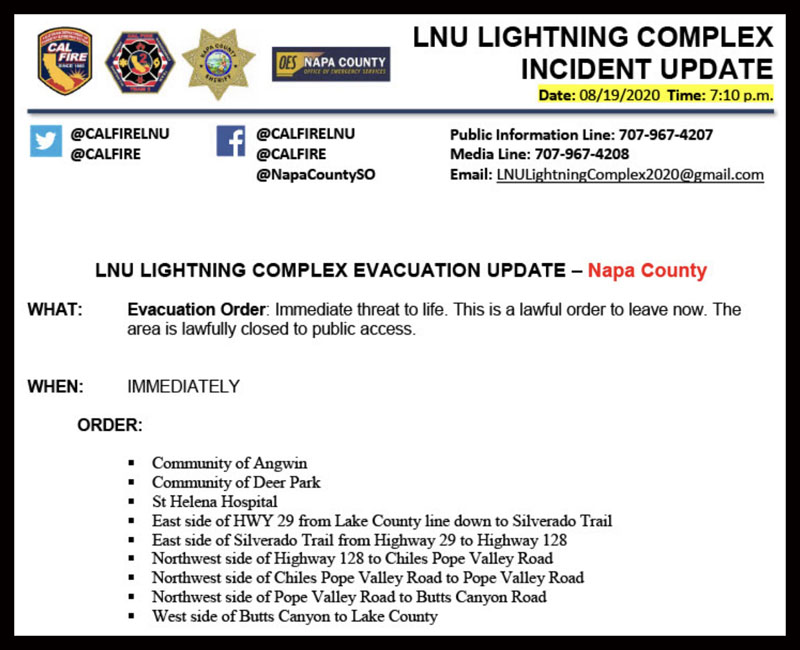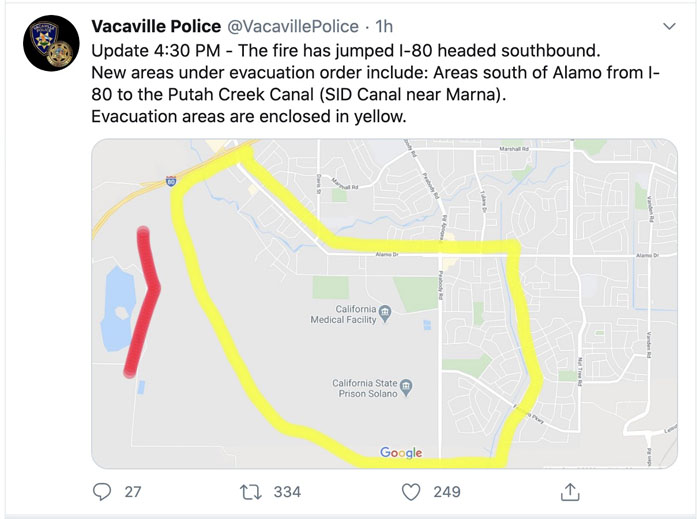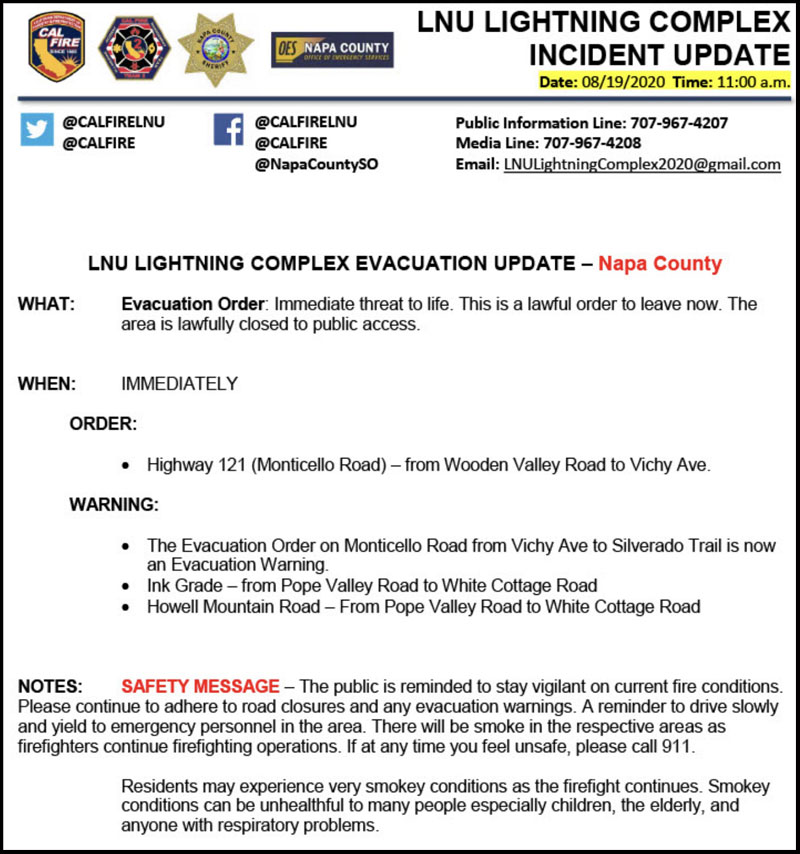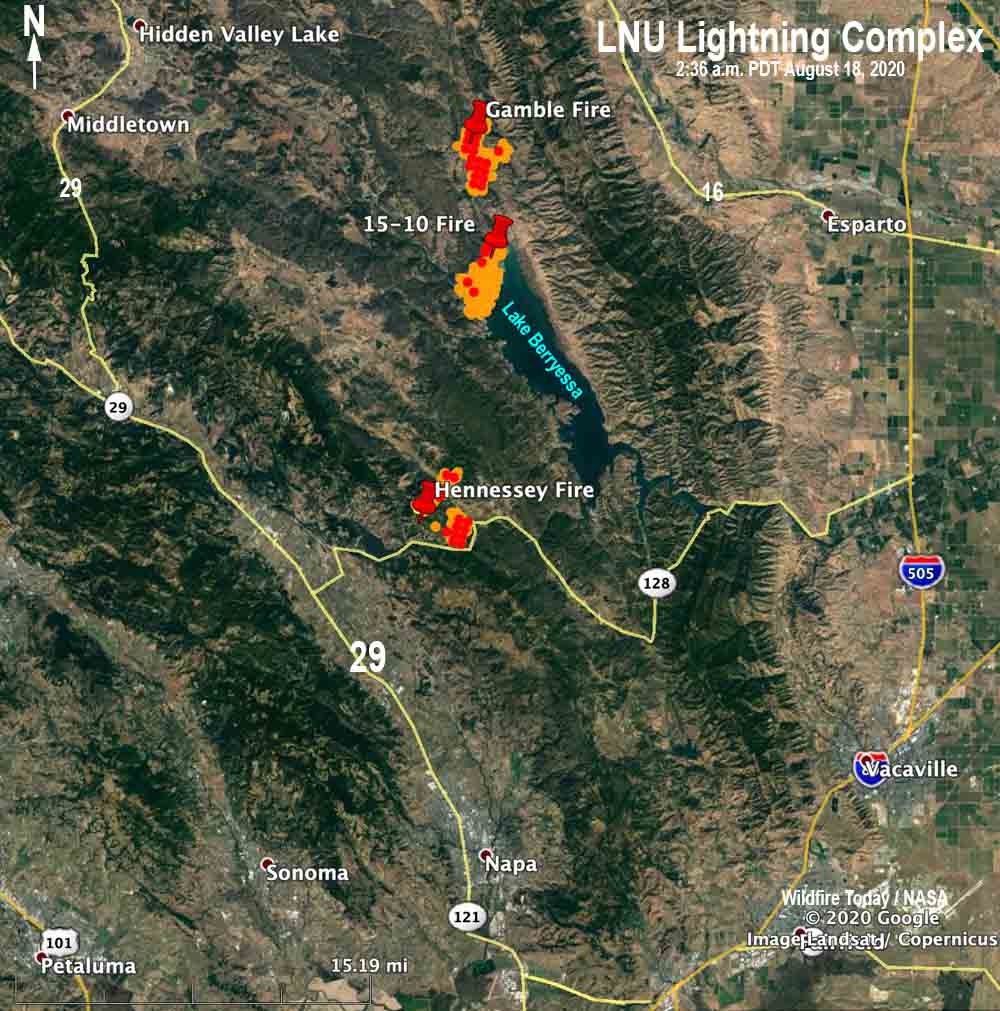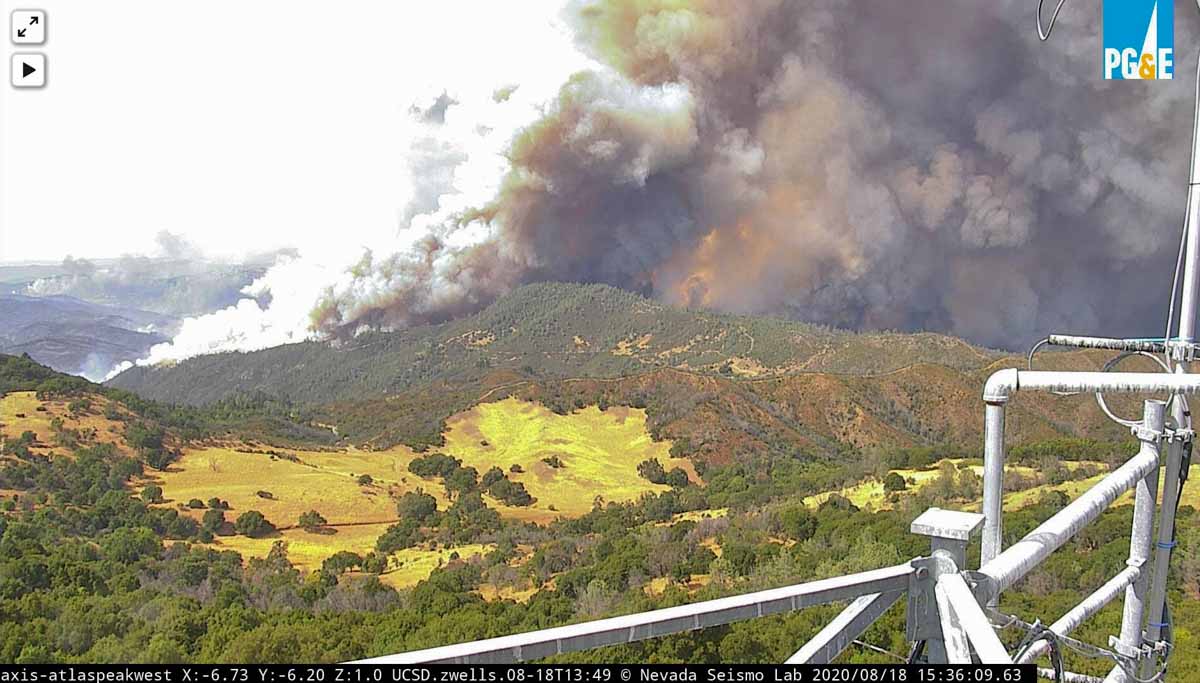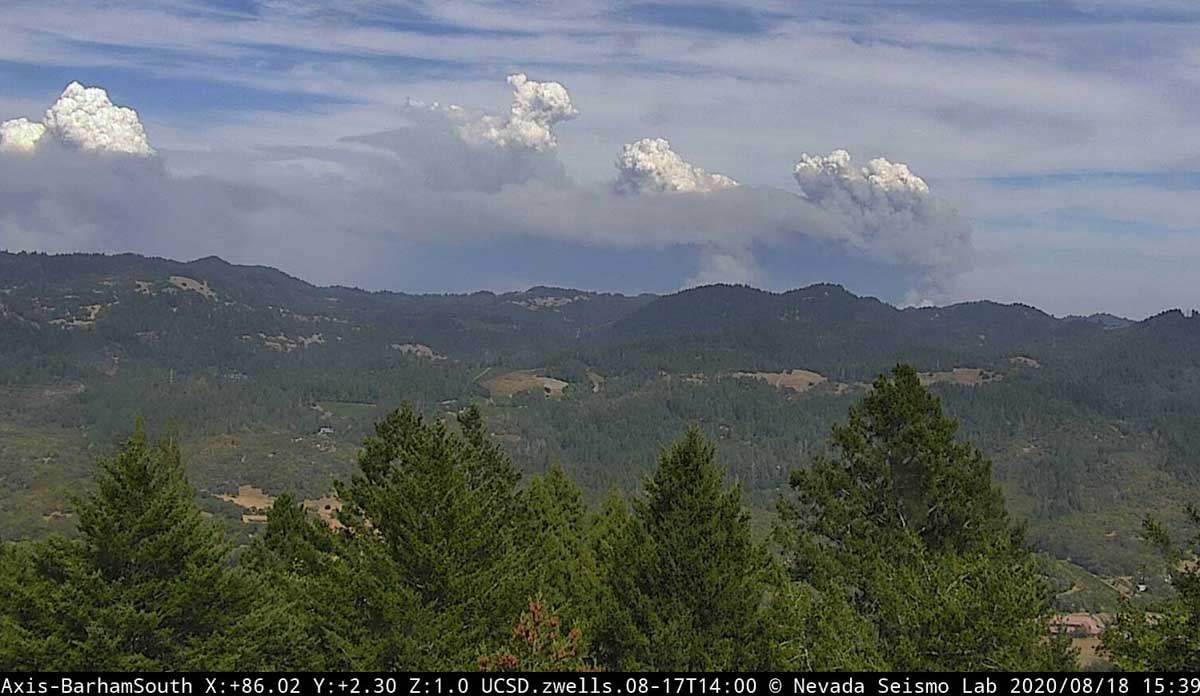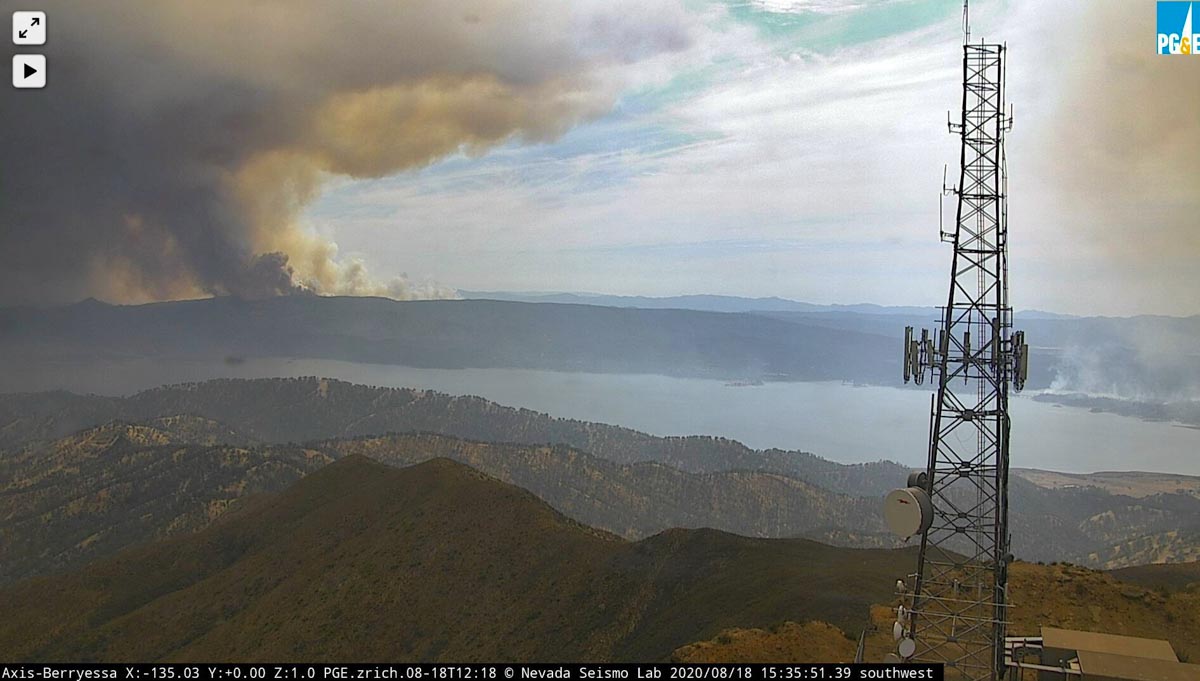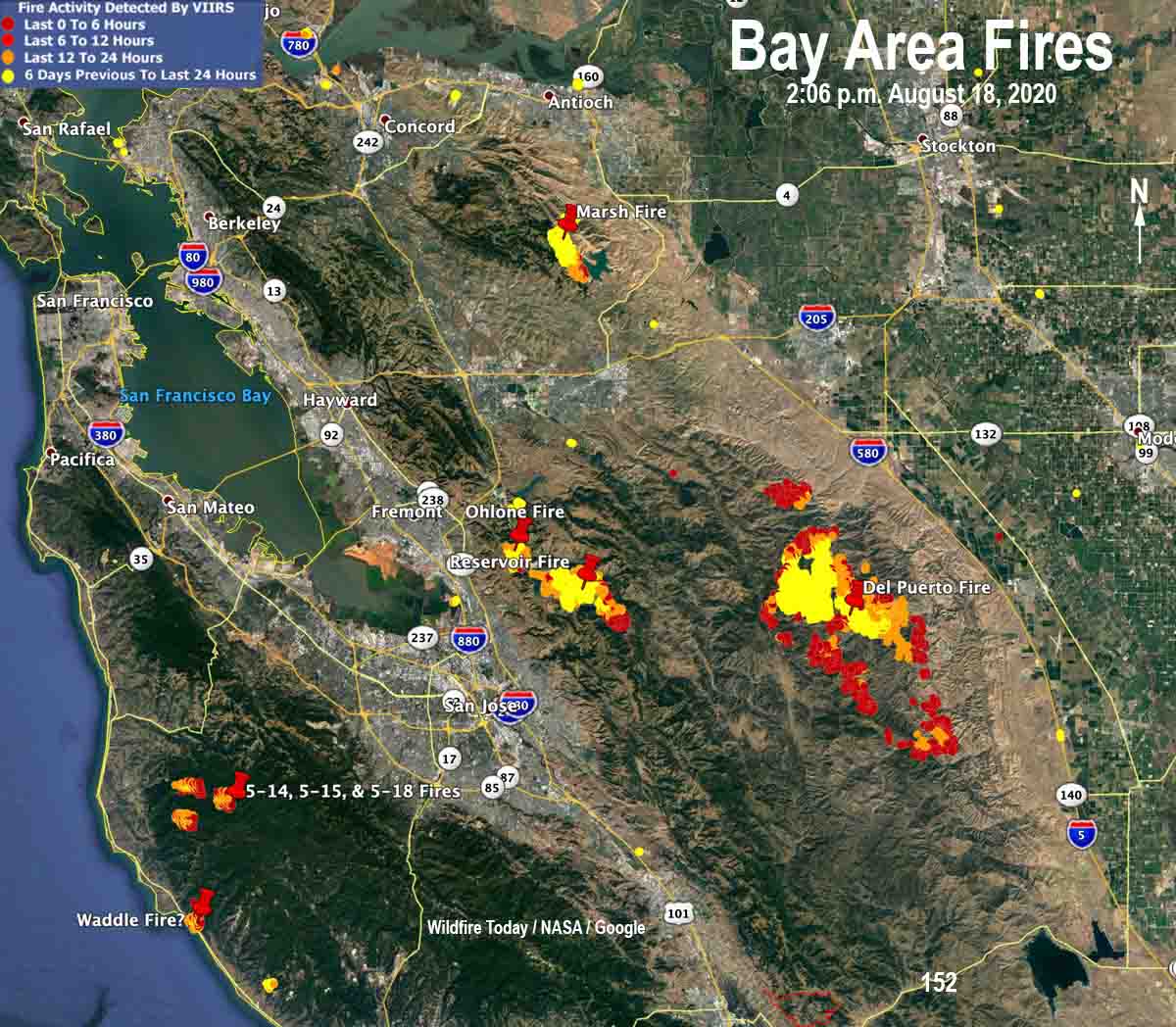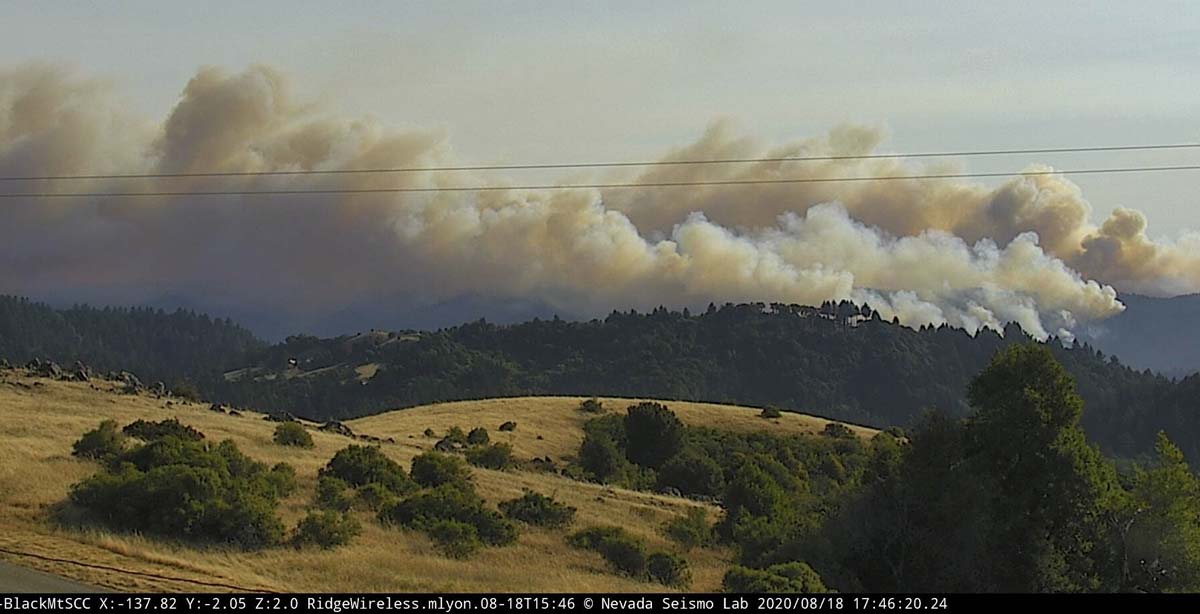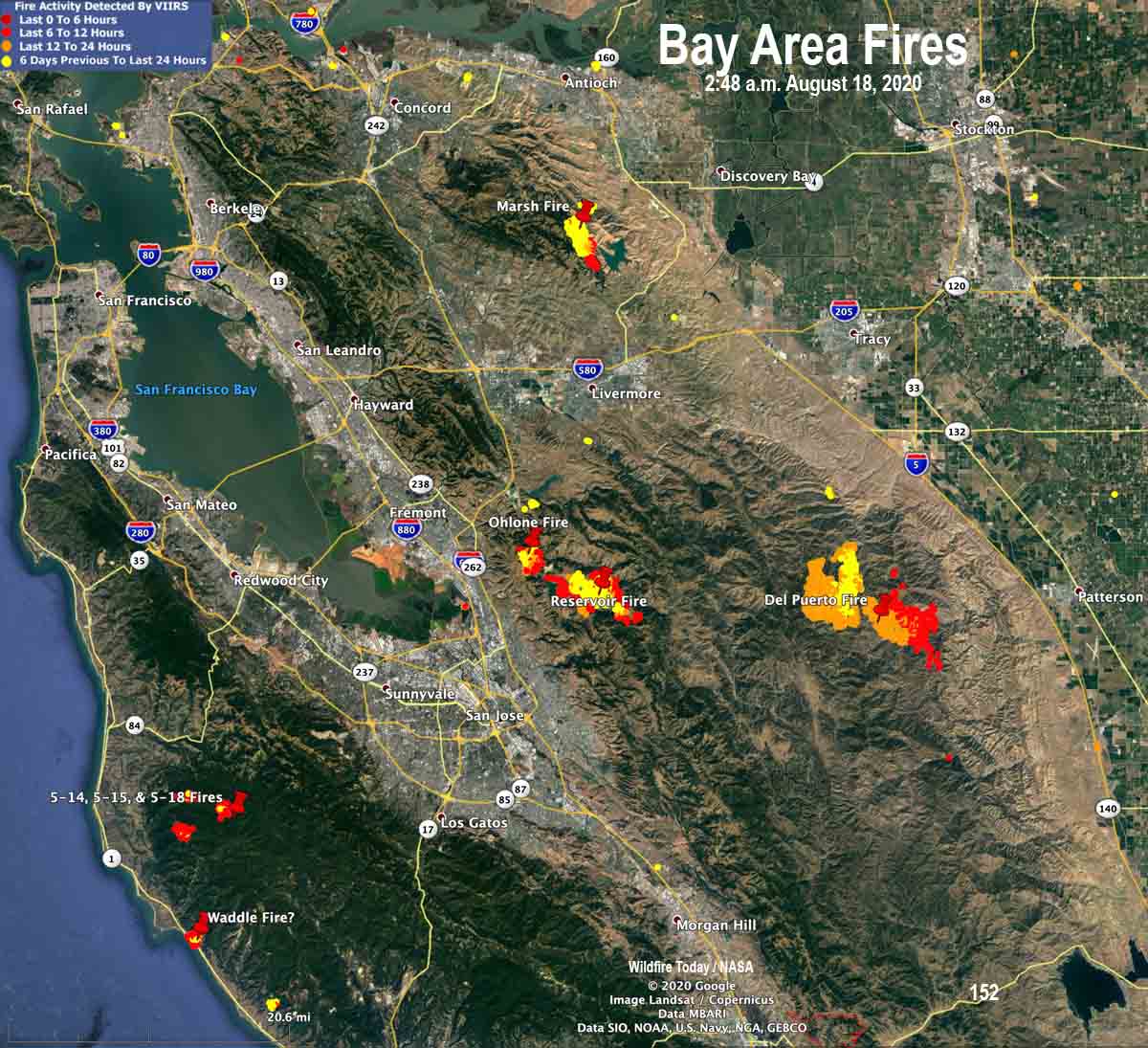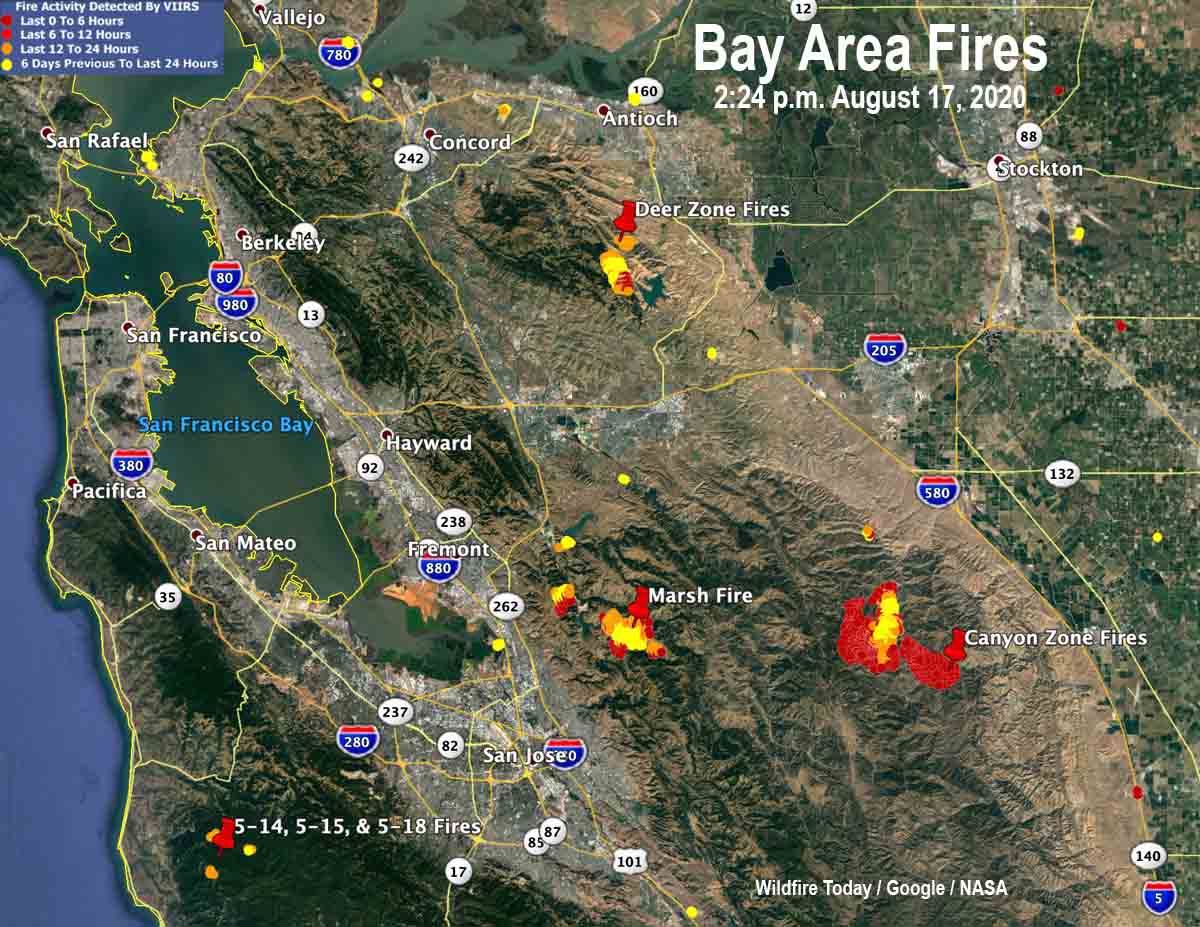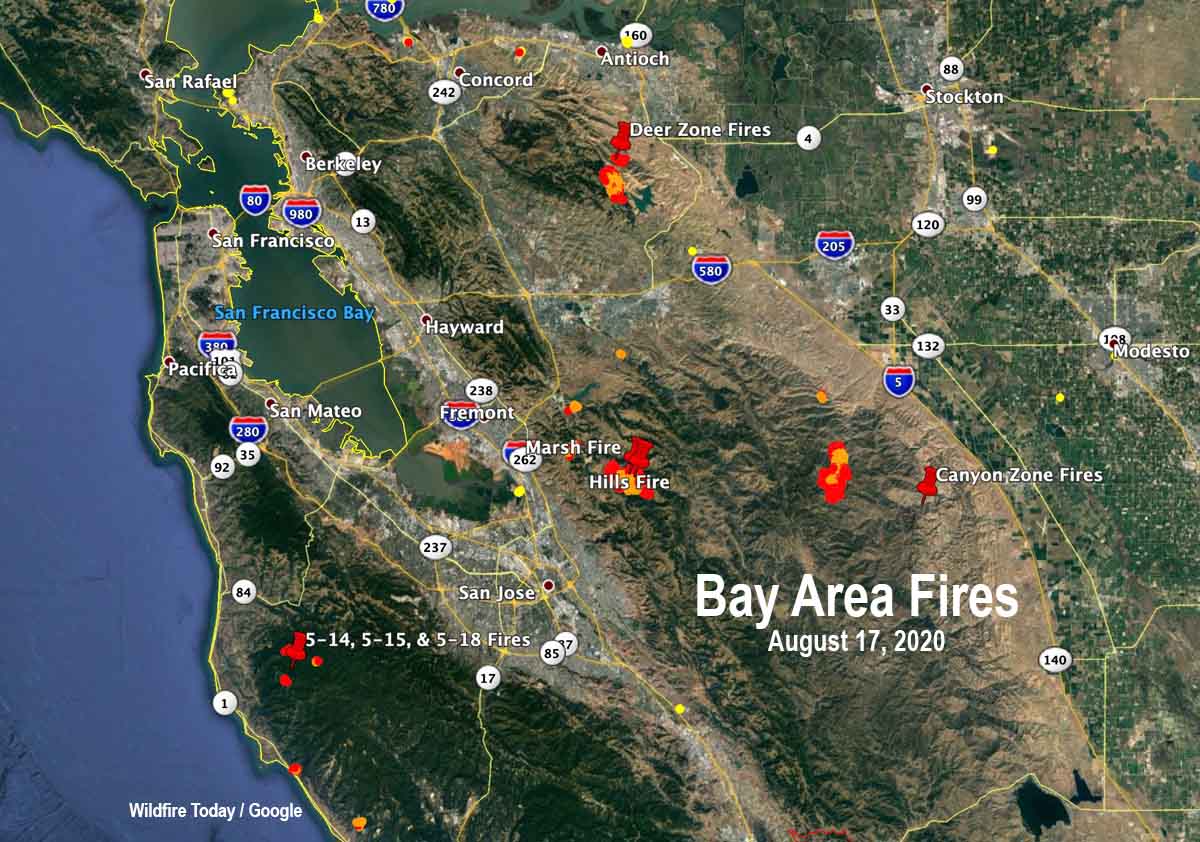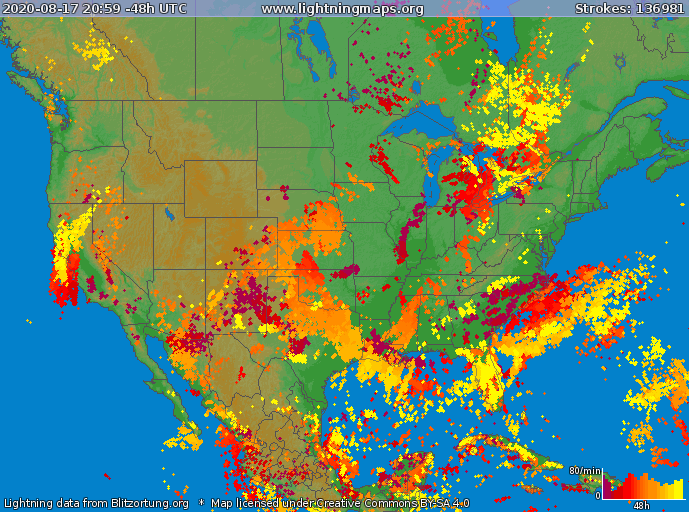August 20, 2020 | 9:05 p.m. PDT
CAL FIRE says the LNU Lightning Complex of fires in the North Bay area of California has now burned 215,000 acres, up from the 131,000 acres announced by the agency Thursday morning. The number of structures destroyed on the complex has risen to 480.
Resources assigned to the fire include, according to CAL FIRE, 9 hand crews, 27 water tenders, 8 helicopters, 69 fire engines, and 28 dozers, for a total of 587 personnel. These are very low numbers for a fire that is closing in on a quarter of a million acres, and are indicative of how firefighting resources are having to be shared among the 367 fires that were found after the lighting bust in California. Many of those firefighters, some of whom are working double shifts, must be feeling the physical and mental strain of this battle that has been going on since Sunday when 72 hours of lighting began.
(To see all of the articles on Wildfire Today about the lightning-caused wildfires in California, including the most recent, click HERE.)
Resources are coming in from other states, and the U.S. Forest Service has increased the number of available large air tankers from 30 to 32 by bringing on two more military C-130 aircraft equipped with Modular Airborne Fire Fighting Systems (MAFFS). But aircraft can’t put out these fires driven by strong winds, very low humidity, dry vegetation, and near record heat. And smoke has at times decreased the visibility to the point where it was unsafe for them to fly.
Nationwide there are 416 hand crews, 1,507 fire engines, and 194 helicopters working on fires, for a total of 19,812 personnel. Incident Management teams committed in the U.S. include 13 Type 1 and 16 Type 2 teams; in California, 10 Type 1 and 5 Type 2 teams are assigned.
August 20, 2020 | 11:40 a.m. PDT
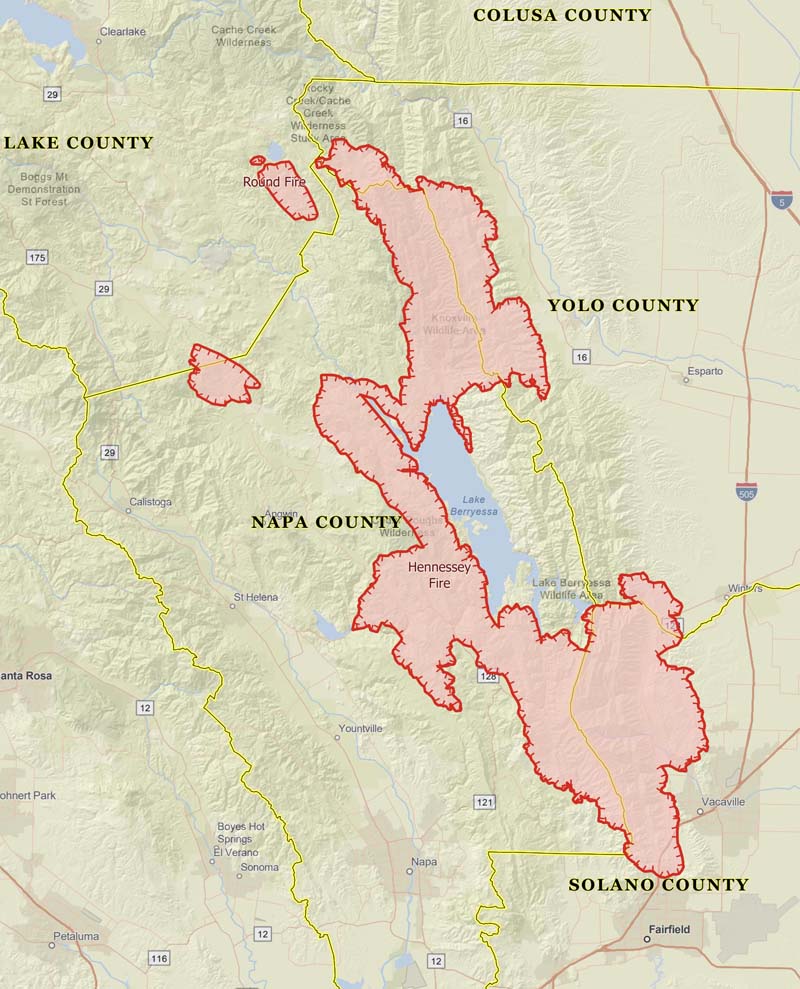
At least seven large fires in California’s North Bay area have merged into one huge megafire. The Hennessey, Gamble, Green, Spanish, 5-10, Morgan, and Markley Fires are now one. It is 43 miles long, from the northeast corner of Yolo County, south across Napa County and into Solano County. The new merged fire is assuming the Hennessy Fire name and is being managed as part of the LNU Lightning Complex of fires that combined has covered 131,000 acres CAL FIRE said Wednesday. The number of acres may go up substantially later on Thursday as more current data is available.
CAL FIRE’s website has gone down at times Wednesday and Thursday, removing one source for critical information about the fire.
The agency said 105 structures (residences, commercial, and other) have been destroyed in the LNU Lightning Complex of fires.
A PG&E worker based in Vacaville died while assisting first responders, said company spokesperson John Kaufman. No further details were released.
A pilot was killed August 19 in the crash of a helicopter while working on the Hills Fire, approximately 9 miles south of the City of Coalinga.
Statewide in California there are 367 wildfires. Most of them started from the 10,800 lightning strikes during a 72-hour period that began Sunday. Shortages of aircraft and firefighters are hampering the suppression of the fires. The current dry, windy, and very hot weather conditions make control of any vegetation fire difficult even when an adequate number of resources are available. Some fires are not being immediately attacked by aircraft if they are a lower priority than another situation where lives are immediately threatened. Firefighters are being asked on some incidents to work back-to-back shifts.
Evacuations
Evacuation orders or warnings are in effect in Napa, Sonoma, and Lake counties. One way to keep up with the ever-changing list is the Twitter feed of CAL FIRE’s Sonoma-Lake-Napa Unit. An estimated 13,254 people have been told to evacuate in Napa County.
West of the fires several communities were evacuated Wednesday evening, including Angwin, Deer Park and other areas. The 50 patients that were at the 151-bed St. Helena Hospital northeast of St. Helena were ordered to be evacuated at about 7 p.m.
All non-essential personnel at Travis Air Force Base south of Vacaville were told Wednesday night to evacuate. They were ordered to not exit through the Main or Hospital Gates, but to instead use the North and South Gates.
Wednesday morning two strike teams of ambulances were mobilized in Fresno and Tulare counties in order to assist with the fires in Napa County. The two strike teams of five ambulances each will have a total of 10 paramedics and 10 EMTs with two paramedic supervisors. They were initially sent to Kaiser Permanente Medical Center in Vacaville. Edgar Escobedo, spokesman for American Ambulance, said their mission will be to respond and stand-by in the event of large-scale evacuations of medical facilities and to support emergency medical services and alternate care sites.


